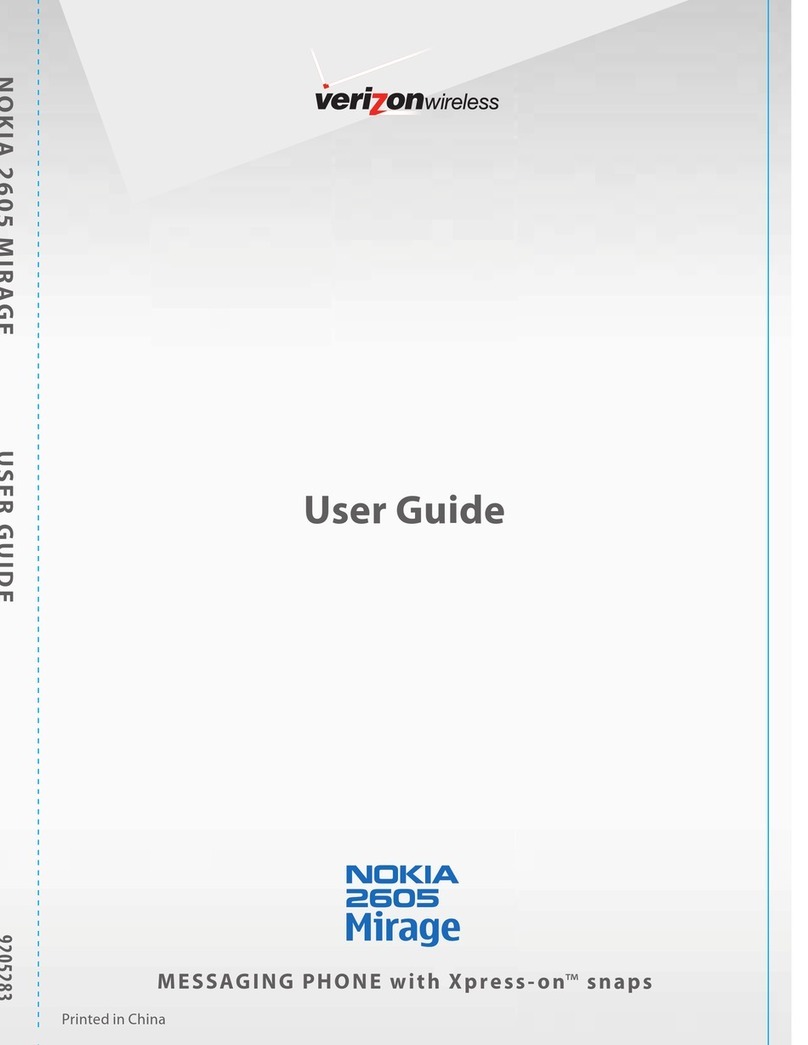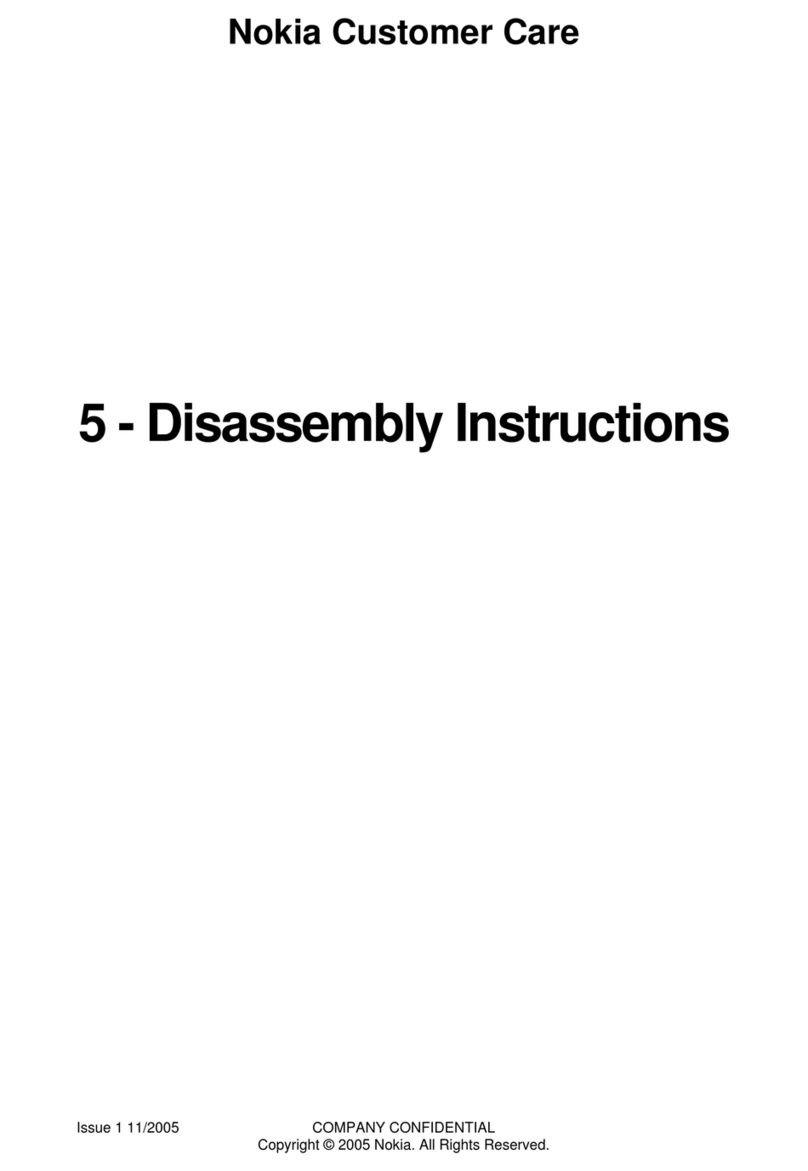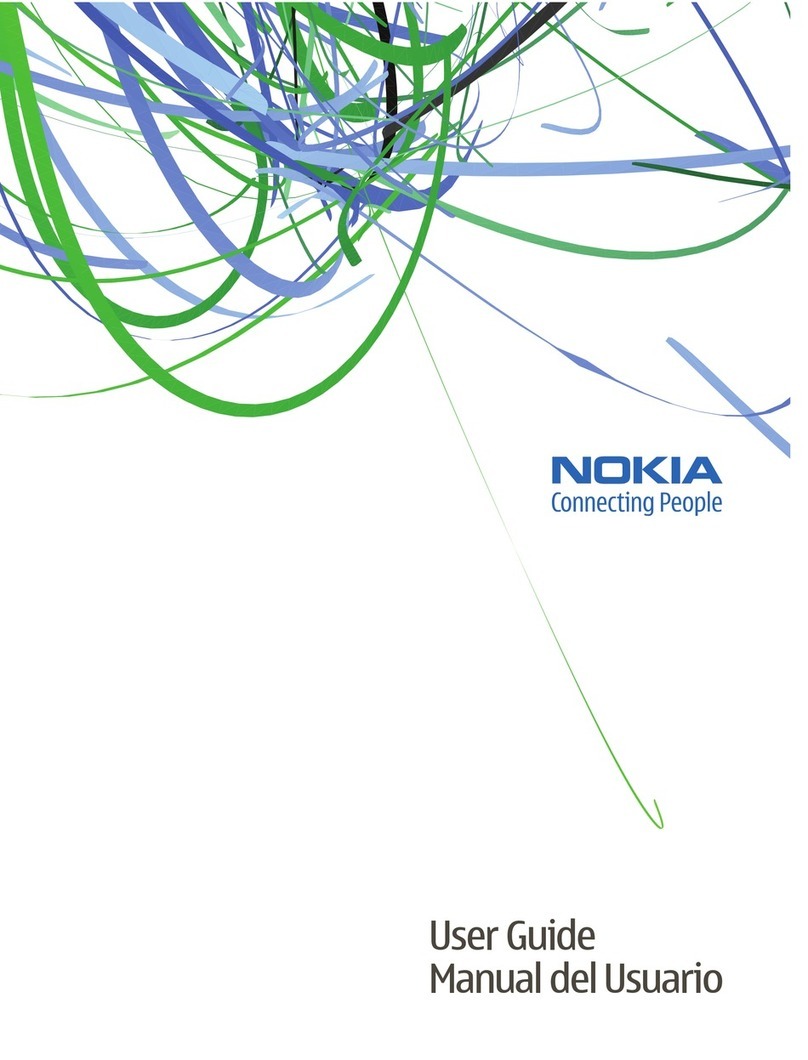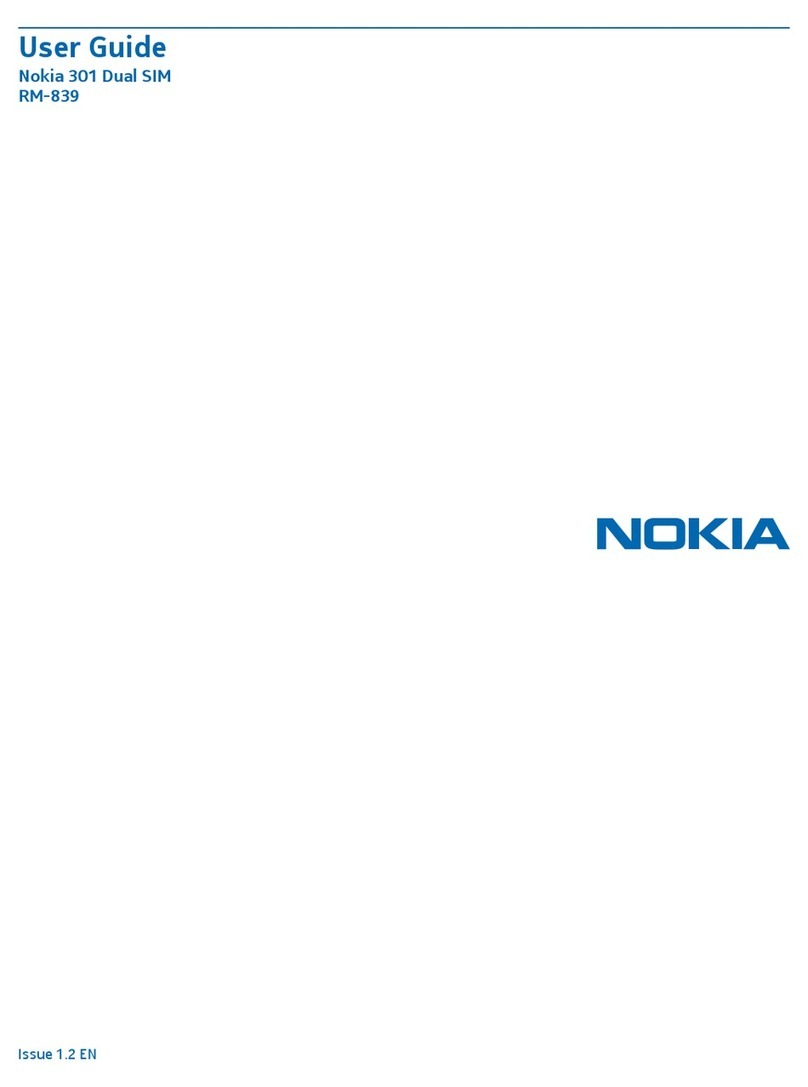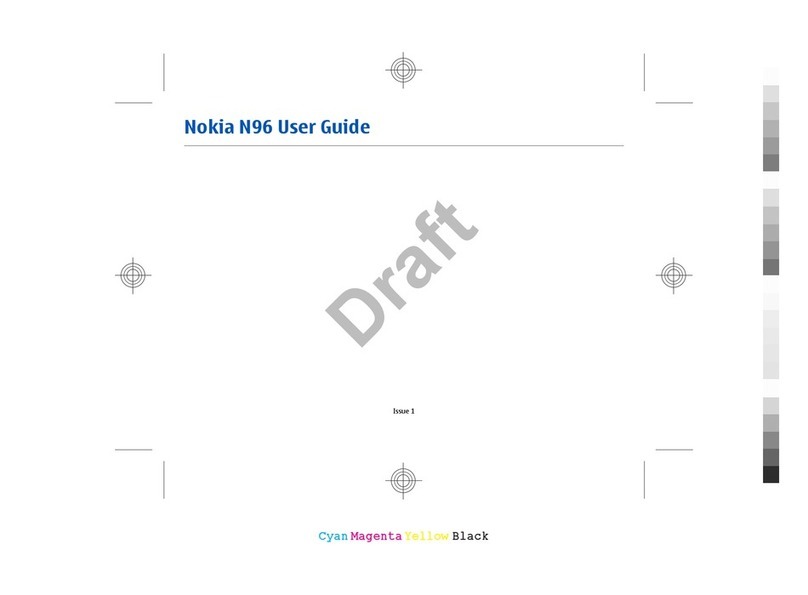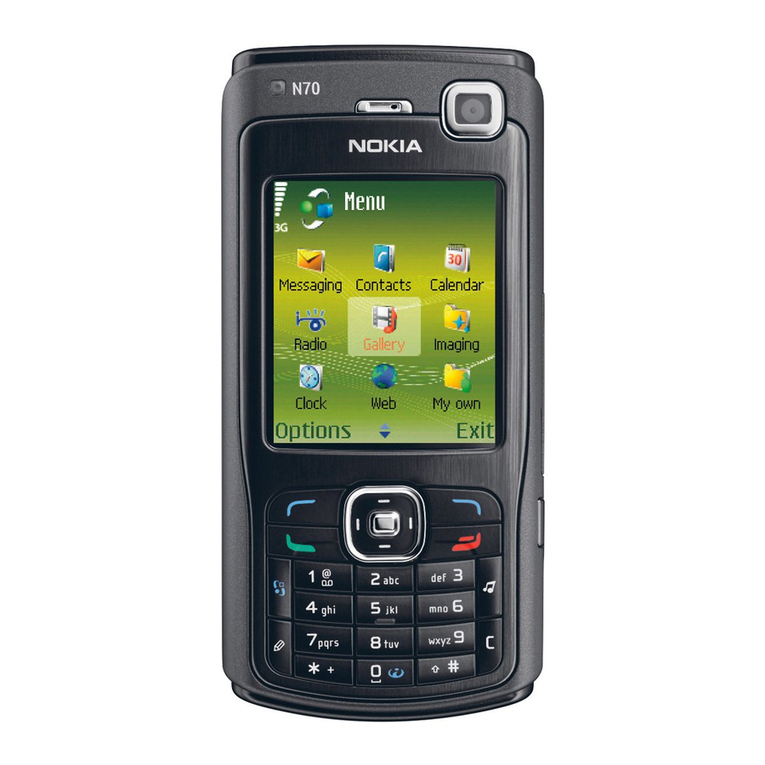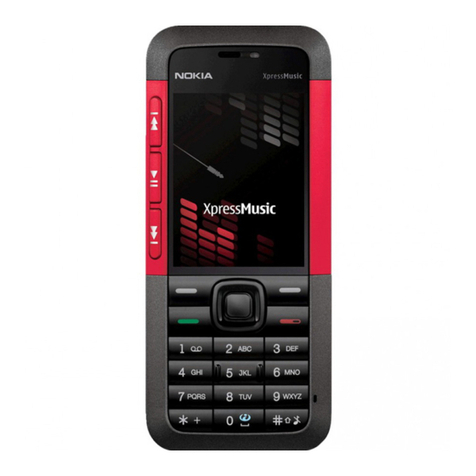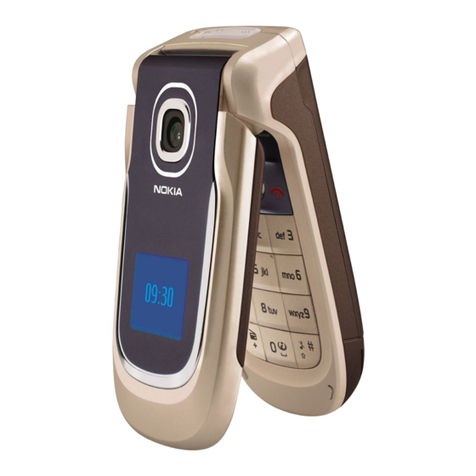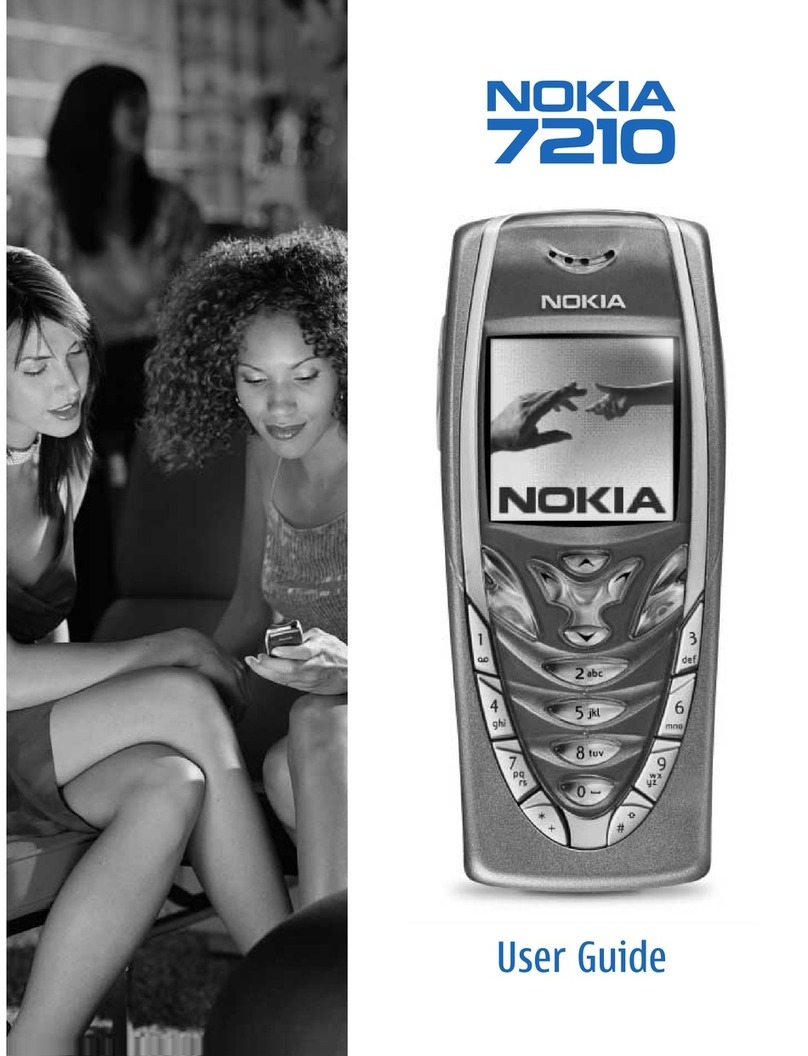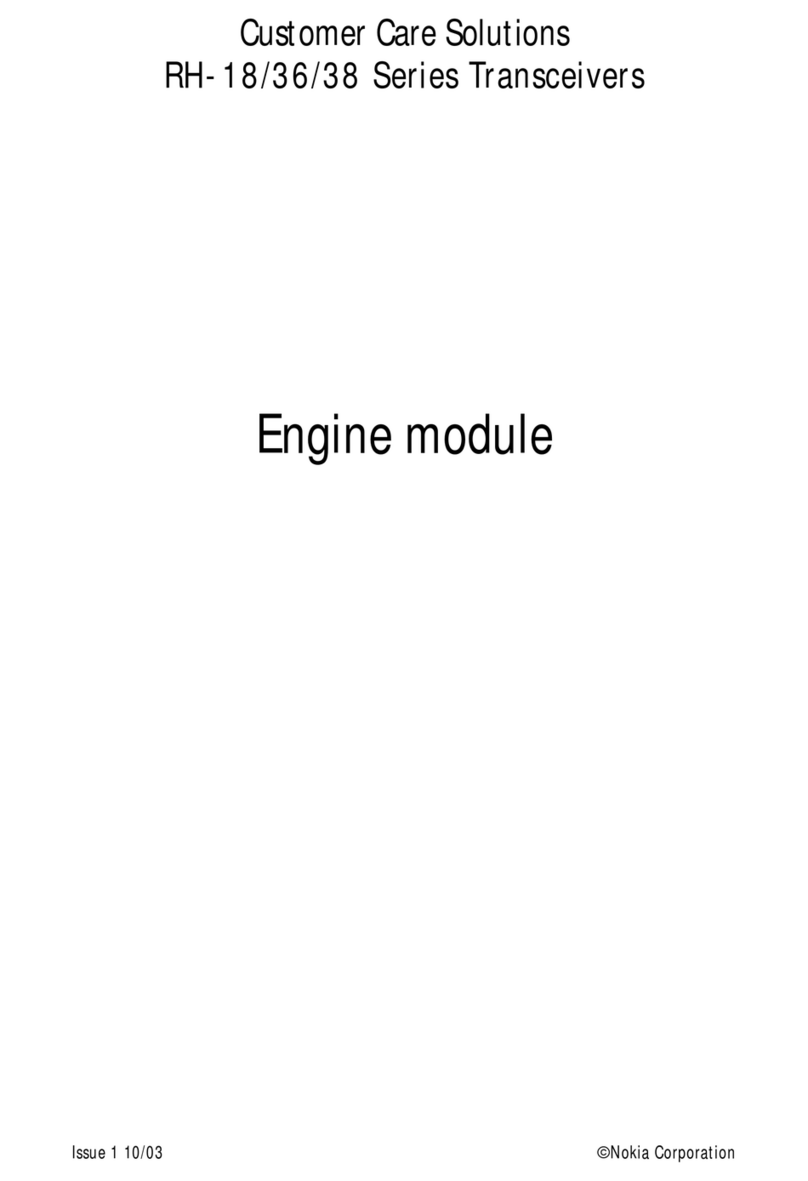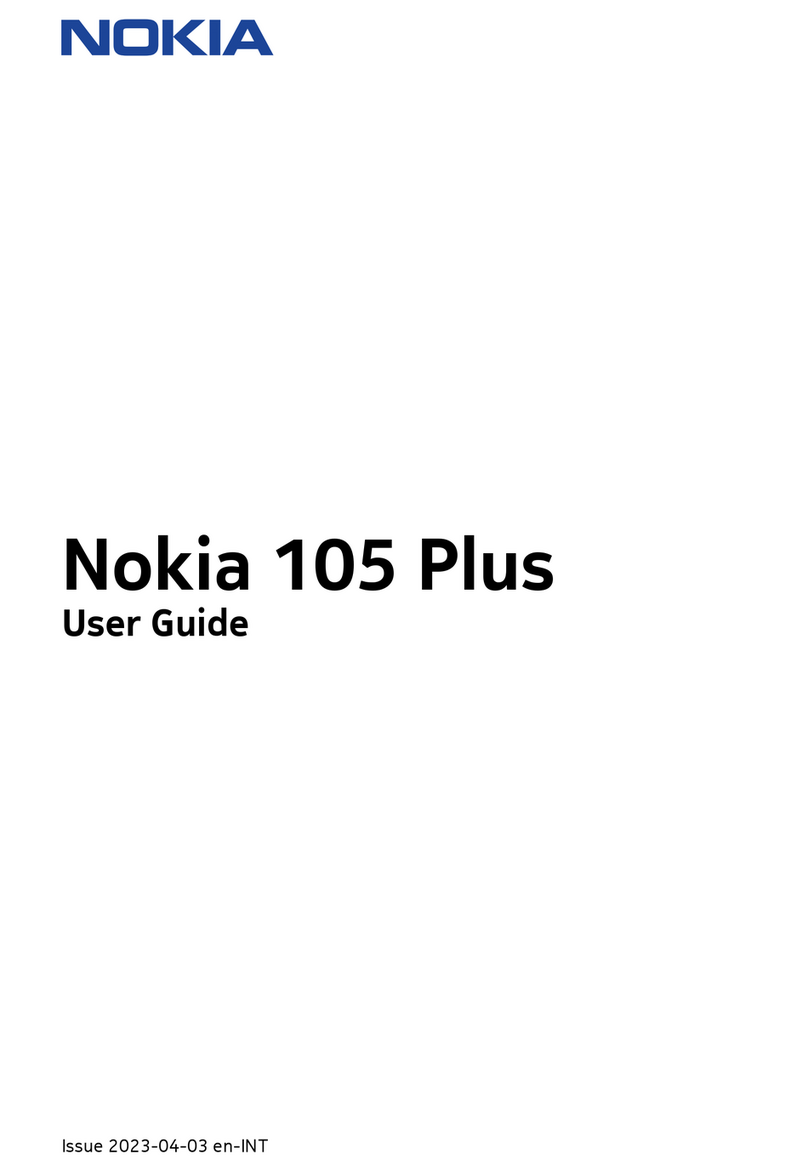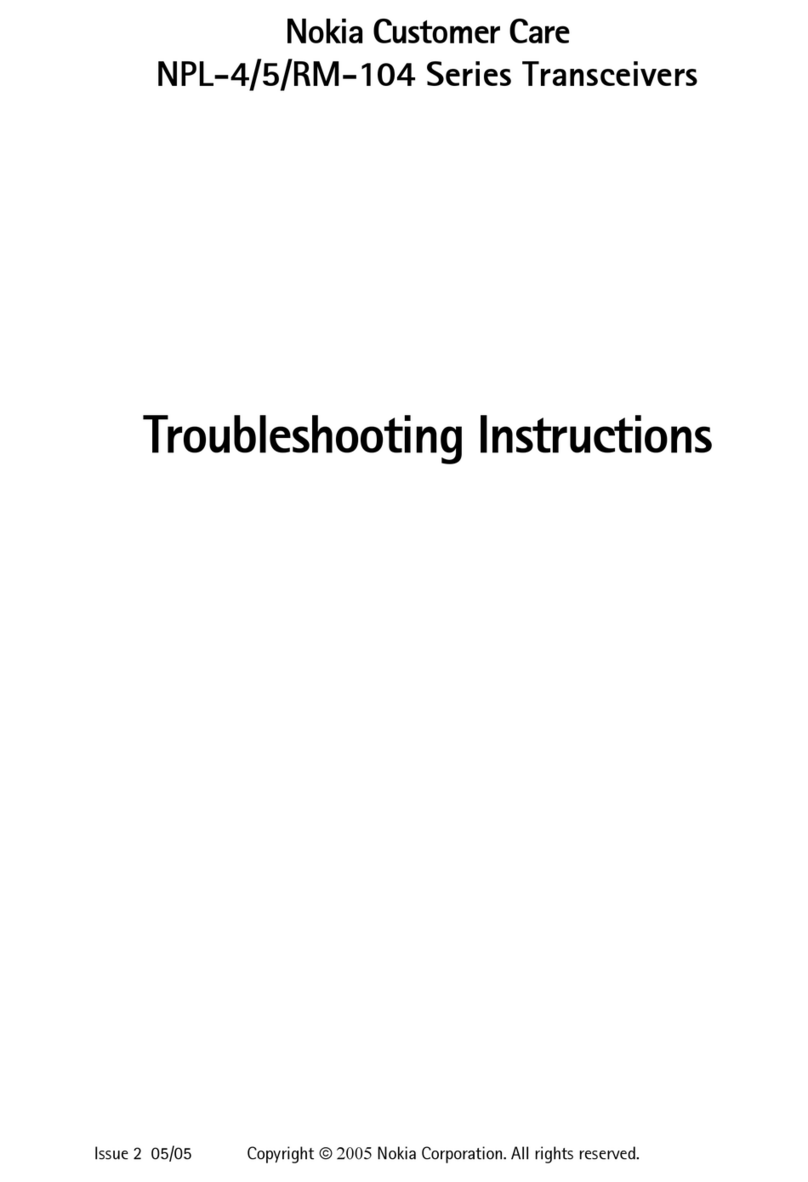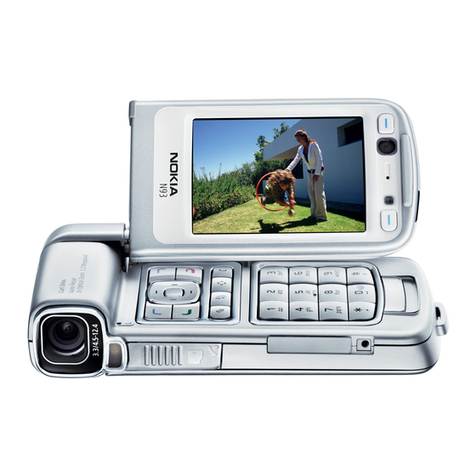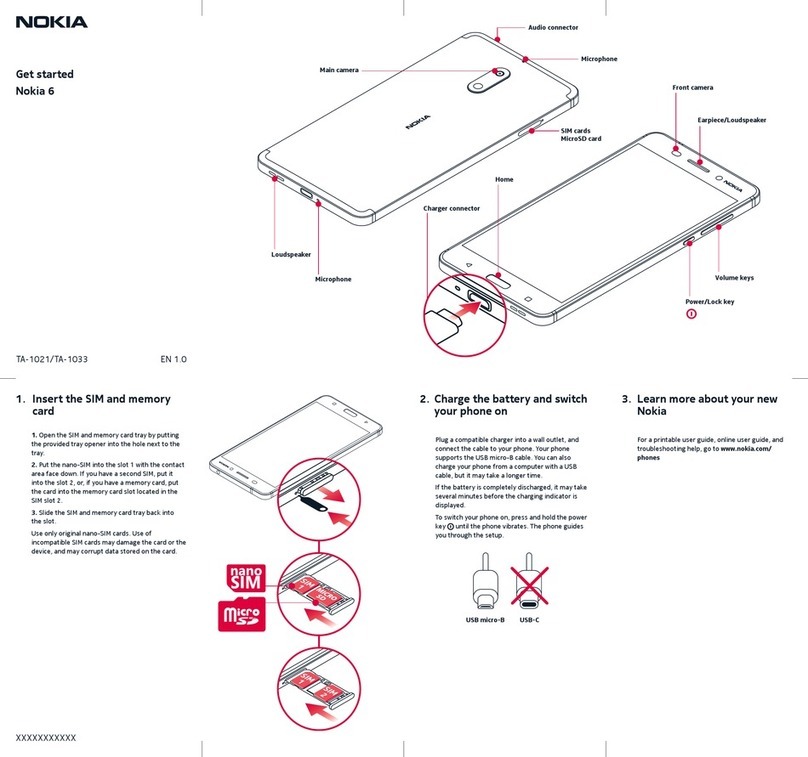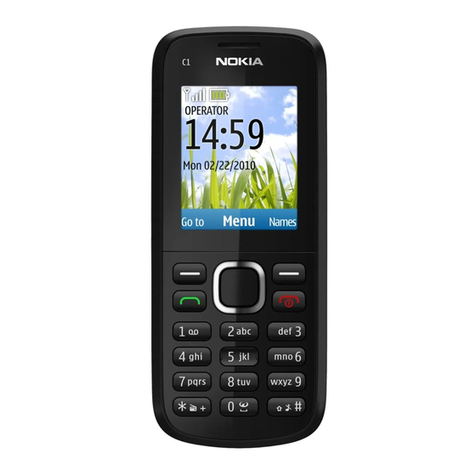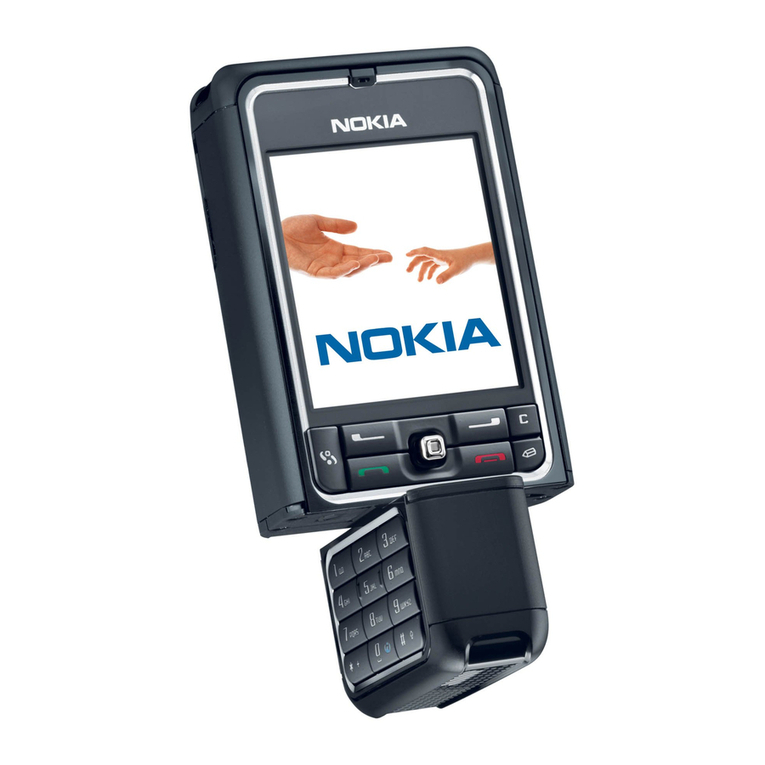
NPL-3 Company confidential
Troubleshooting Instructions CCS Technical Documentation
Page 2 ãNokia Corporation. Issue 1 3/03
Table of Contents
Page No
RF Troubleshooting .......................................................................................................3
Introduction to RF troubleshooting .............................................................................3
RF Key component placement .....................................................................................4
RF Measurement points ...............................................................................................5
GSM850, GSM1800 & GSM1900 Transmitter .............................................................6
General instructions for Tx troubleshooting .............................................................6
Transmitter troubleshooting diagram ........................................................................8
Pictures of transmitter signals .................................................................................11
Additional information for EDGE troubleshooting .....................................................13
EDGE mode troubleshooting differs slightly from basic GSM troubleshooting ....13
Pictures of EDGE transmitter signals ......................................................................17
GSM850, GSM1800 and GSM1900 Receiver .............................................................21
General instructions for Rx troubleshooting ...........................................................21
Troubleshooting diagram for GSM850 receiver .....................................................25
Troubleshooting diagram for GSM1800 receiver ...................................................26
Troubleshooting diagram for GSM1900 receiver ...................................................27
Synthesizer ...................................................................................................................28
General instructions for synthesizer troubleshooting ..............................................28
Pictures of synthesizer signals .................................................................................30
Baseband troubleshooting ............................................................................................32
Main Troubleshooting Diagram ................................................................................33
Phone is dead .............................................................................................................34
Flash Programming Fault ..........................................................................................35
Phone is jammed ........................................................................................................36
SIM card fault (Insert SIM / Card rejected) ...............................................................38
Keypad Fault ..............................................................................................................39
Display Fault ..............................................................................................................41
Illumination fault .......................................................................................................42
Charger Fault .............................................................................................................43
Accessory Fault .........................................................................................................44
Audio Fault ................................................................................................................45
FM Radio troubleshooting ...........................................................................................49
FM Radio component layout .....................................................................................49
FM Radio troubleshooting diagram ...........................................................................50
Notes to "FM Radio troubleshooting diagram" .......................................................50
